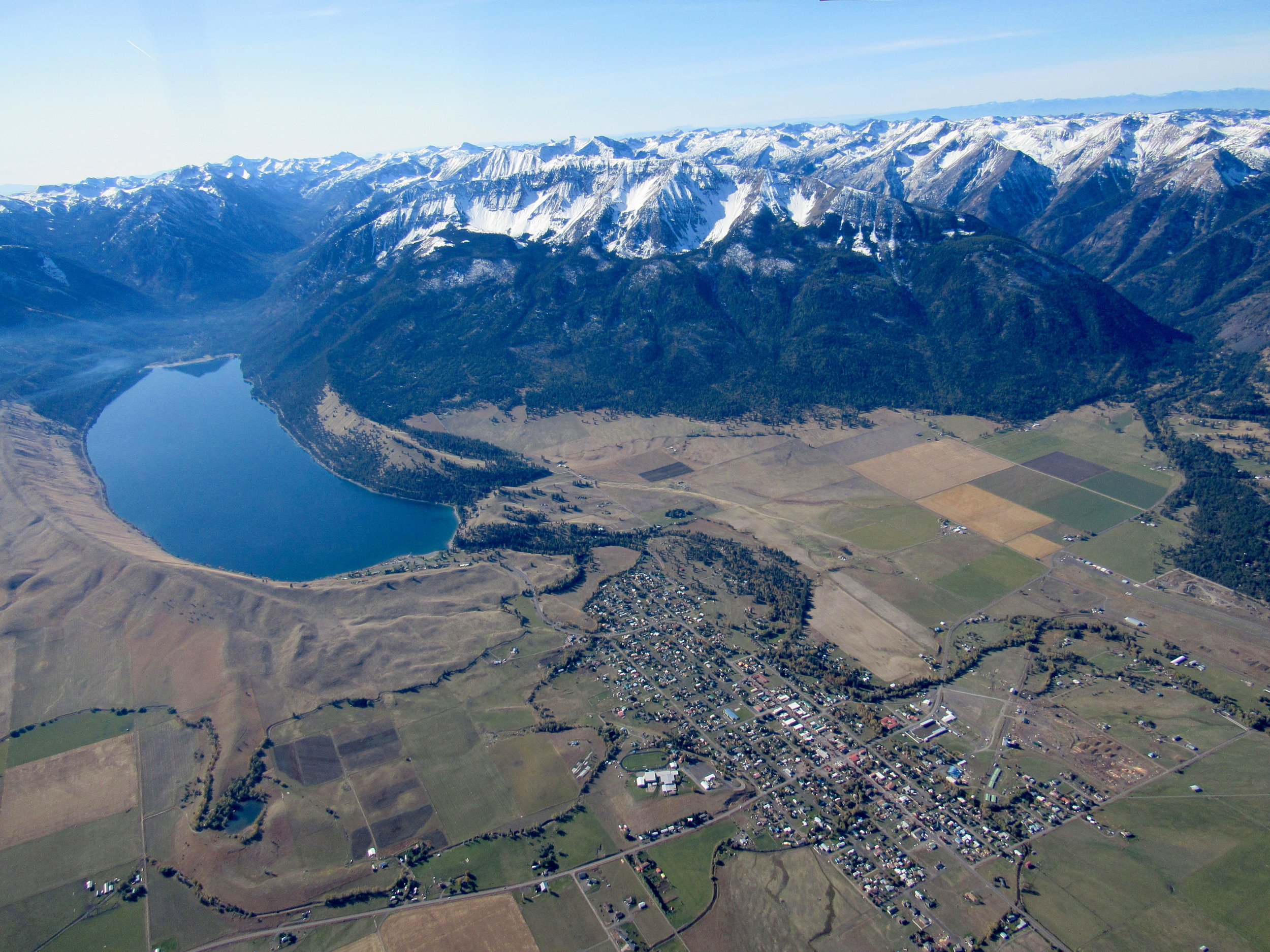
Wallowa County Microgrid
Developing prepared, reliable and economically beneficial microgrid and storage projects for critical infrastructures.
What is a Microgrid?
The U.S. Department of Energy (DOE) defines a microgrid as ‘‘a group of interconnected loads and distributed energy resources within clearly defined electrical boundaries that acts as a single controllable entity with respect to the grid. A microgrid can connect and disconnect from the grid to enable it to operate in both grid-connected or island-mode.” [1].
Really, a microgrid should be thought of as a miniature version of the grid, with the main grid supporting it. Microgrids, just like the grid, consist of power sources, power storage, distribution infrastructure, and end users. The big difference between the grid and microgrids is that a microgrid can run and operate in a fully functional manner when the main grid is not functioning. Because microgrids are built and designed for a specific community, features such as demand response can be setup for the specific application. And since microgrids are servicing a smaller community, it can be designed in a way to support the community’s exact needs optimizing on it’s loads/applications. For example, if a microgrid is designed for a medical facility, it could be setup such that it can perform in a seamless islanding manner. Islanding means that a microgrid can separate and protect itself from the trouble occurring on the main grid and therefore operating on its own. Overall, when the term microgrid is mentioned, you should probably think of a mini-grid that is self-sustainable, resilient, and designed for a specific use case.
How can Microgrids Help Wallowa County?
The proposed microgrid is focused entirely on critical infrastructure such as community emergency shelters, nursing homes, schools, medical facilities, grocery and fuel distributers, city water and wastewater stations, and can help the community by mitigating long-term outages from extreme weather events to these critical infrastructures by providing power that will ensure residents can endure a long-term grid outage in relative safety and comfort.
Prepardedness.
Microgrids improve prepardedness by disconnecting from the main grid during an outage and using local resources, including storage and renewables to keep power flowing to their communities.
Integration of Renewables.
Community-Based Renewable Energy (CBRE) like solar, fish-friendly hydropower, biomass and battery storage, are key components of a microgrid. They offer a local generation source that can sustain the microgrid as well as send excess power to the grid. Oregon Legislature passed House Bill 2021 which directed the Oregon Department of Energy to convene a workgroup to examine opportunities to encourage development of small-scale and community-based renewable energy projects in Oregon.
THE OVERALL GOAL
The Wallowa County Microgrid Resiliency Corridor Project’s overall goal would be completing a microgrid project resulting in our County Critical Infrastructure being supported by local renewable energy during long-term outages from extreme weather events, providing grid services, and improving reliability.
Understanding Public Safety Power Shutoffs
The Wallowa County Microgrid Resiliency Corridor is a project that is currently in progress of the planning phase. Successful outcomes and success metrics may change throughout the life of this project as phases are completed.
Our focus is rooted in serving our underserved, rural community by reducing reliance on large-scale, distant, centralized energy resources while minimizing environmental impacts.
DOWNLOAD INFORMATIONAL MATERIALS:
Learn More About the Project
-
The proposed Joseph community energy resilience hub could be powered by soon to be rehabilitated Wallowa Lake Dam. Years ago, the dam provided hydropower to it’s surrounding community until the powerhouse was destroyed by a lightning strike and fire in the early 1950s. The rehabilitated dam will not only be fish compatible but will provide flood protection to local communities, more water to irrigators, and the possibility of fish-friendly hydropower development through irrigation conduit.
-
The proposed Enterprise community energy resilience hub will be powered by two solar projects, an existing Community Solar Project and a yet to be designed and constructed solar project north of town.
-
The proposed Wallowa community energy resilience hub will be powered by one proposed solar project and one biomass project. The biomass or biogas would be created through the gasification of woodchips sourced from a biomass facility that utilizes forest restoration residuals. The entire county is surrounded by national forest where ongoing forest treatment methods are employed that could generate a more than adequate feedstock supply.
PROPOSED TIMELINE COMING SOON
FAQs
How do microgrids keep the lights on during power outages?
Microgrids disconnect themselves from the main grid and rely on CBRE or local generation sources, such as solar power, hydropower, and battery back-up systems.
Who will use the Wallowa County microgrids?
The proposed microgrids would be used by a range of critical infrastructures — including community shelters, hospitals, medical clinics, schools, fire stations, retirement facilities, and government buildings.
How microgrid affect my family?
The proposed microgrid will be beneficial to your family by providing energy resilience to our critical infrastructures such as community emergency shelters, nursing homes, schools, medical facilities, grocery and fuel distributers, city water and wastewater stations, during long-term outages. The proposed microgrid will not be connected to your home and is fully focused on the aforementioned infrastructures.
Have microgrids been around for a while?
Although microgrids have been around for decades, microgrid technology has matured over the past 5-10 years. In fact, as early as 1900, micro hydropower plants were installed in each of the county’s four largest towns that the community relied solely on until 1953.
What does this microgrid look like?
The visible part of the Wallowa County microgrid may include solar panels, hydropower, substation infrastructure and battery storage. To maximize reliability, microgrid power lines are typically buried underground. The microgrid controller, which is the “brains” of the microgrid is a software-based system that manages energy supply within the microgrid.












